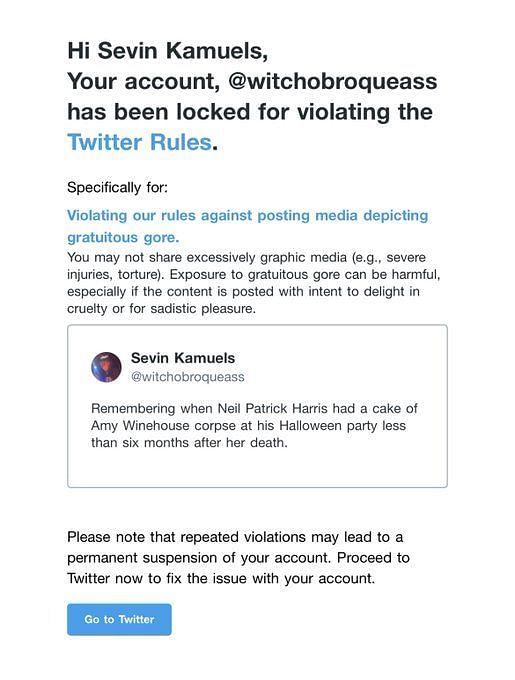Did a Hollywood star truly cross the line, transforming a moment of remembrance into an act of questionable taste? The controversy surrounding Neil Patrick Harris and a cake designed to resemble Amy Winehouse’s corpse continues to spark debate, highlighting the complexities of celebrity behavior and the sensitivity surrounding grief.
In 2011, the world mourned the loss of the immensely talented Amy Winehouse. Just months after her untimely passing, a Halloween party hosted by Neil Patrick Harris and his husband, David Burtka, became the focal point of intense public scrutiny. The reason? A cake, or rather, a serving platter, designed to mirror the singer's likeness in a manner that many found deeply offensive. The image of this creation, meant for a celebratory occasion, quickly circulated, igniting a firestorm of criticism that would linger for years to come. The incident resurfaced in 2022 with a viral tweet, bringing the controversy back into the spotlight, and again in 2024 with the release of Winehouse's biopic.
To better understand the individuals involved and the context of this controversial event, let's delve into some key details:
| Category | Information |
|---|---|
| Subject | Neil Patrick Harris |
| Full Name | Neil Patrick Harris |
| Date of Birth | June 15, 1973 |
| Place of Birth | Albuquerque, New Mexico, USA |
| Height | 6' 0 (1.83 m) |
| Spouse | David Burtka (Married since 2014) |
| Children | Twins Gideon Scott Burtka-Harris and Harper Grace Burtka-Harris |
| Education | La Cueva High School |
| Career | Actor, Singer, Producer, Director, Magician |
| Known For | Barney Stinson in How I Met Your Mother, Dr. Horrible in Dr. Horrible's Sing-Along Blog, Count Olaf in A Series of Unfortunate Events, and numerous Broadway performances and awards show hosting roles. |
| Awards and Recognition | Primetime Emmy Awards, Tony Awards, People's Choice Awards, and more. |
| Professional Highlights |
|
| Controversies |
|
| Social Media Presence | |
| Reference Website | IMDb - Neil Patrick Harris |
The core of the criticism centered on the perceived insensitivity of recreating the late singer's appearance in such a manner, especially so soon after her death. Critics argued that the cake trivialized her passing and was deeply disrespectful to her memory and those who mourned her.
The incident was not a one-off; it was part of a larger conversation about celebrity behavior and the boundaries of good taste. The immediate response, from both the public and media outlets, was largely negative. Social media platforms quickly became awash with condemnations, with many expressing their disgust and disappointment. The resurfacing of the image in 2022 and again in 2024 only amplified the negative reactions, demonstrating the enduring nature of the controversy and the public’s continued sensitivity to the subject matter.
In the wake of the criticism, Neil Patrick Harris issued an apology. He acknowledged the hurt caused by the image, expressing regret for any offense it had caused. This apology, while important, did not fully quell the controversy. The nature of the apology, and the timing of it, were also subject to further scrutiny, with some arguing that the response was insufficient or came too late to mitigate the damage. The actor's response, while present, became another point of discussion, demonstrating how even a sincere apology can be weighed and measured in the court of public opinion.
The Amy Winehouse corpse cake incident serves as a stark reminder of the impact of celebrity actions, both intended and unintended. The lasting impact of this event is a testament to how public image can be shaped by seemingly small decisions, especially when dealing with sensitive subject matters such as death and loss. While the story is about a specific instance, it is a broader study on the intersection of fame, art, and the often-delicate boundaries of human sensitivity.
The use of the cake, designed to mimic Amy Winehouse's appearance, raised serious questions about the propriety of such a portrayal. The choice of imagery, the timing of its unveiling, and the context of a Halloween party all contributed to the perception of tastelessness. While some may argue for artistic freedom or a degree of creative expression, the consensus opinion, as reflected in social media and mainstream media coverage, leaned towards the view that the act was in poor taste.
The Amy Winehouse biopic, released in 2024, brought the discussion back into mainstream conversation, the timing highlighting a renewed interest in the singer's legacy and a reminder of the circumstances surrounding her death. The event sparked a wave of renewed criticism and commentary, showing how the legacy of Amy Winehouse continues to evolve in the public consciousness.
The event serves as a microcosm of a broader phenomenon – the intersection of fame, artistic expression, and public sensitivity. While Harris may have had artistic intentions, the public's reaction demonstrates the importance of considering the context and potential impact of creative choices, especially when dealing with sensitive topics such as death and loss. The incident also provides a case study of how quickly images can spread in the digital age and how past actions can continue to shape a public persona long after the original event. This event also serves to highlight the potential risks of misjudging public sentiment and the importance of understanding the impact of one's actions, particularly those amplified through the lens of celebrity.



